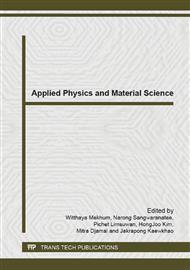p.94
p.98
p.102
p.107
p.111
p.115
p.119
p.124
p.128
Environmental Study on the Behavior of Water Drops with Circular Resin Insulator Material under DC Electric Field Stress
Abstract:
The influence of damages on the insulator’s surface in the distribution system is investigated in this paper. The circular resin is used as the specimen under high voltage direct current (HVDC) between the electrodes with diameter of 2 mm and distance between both electrodes are 35 mm. There are three cases in the experiment and it was tested in environmental condition under dry surface, single droplet and double droplets. The HVDC had been applied to the electrodes, the level of applied were 5, 10, 15, 20, 25, 30 and 35 kV. The results show that the arc occurs rapidly in the case of single and double drops with compared to dry surface. The movements of the water drop of the single and doubles are pretty similar, but the arc occurs quickly in the double drop in comparison with single drop owing to double drops stretch to each other. The double drops take a lower voltage on stretching, whereas the single drop takes higher because the double drops have much more densities than single drop. Besides, the double drops act as a bridge allow the electrical field generated from both electrodes pulled them resulting in arcing easily. In conclusion, the droplets on the surfaces cause the leakage current and it has an effect on the stability of the distribution system.
Info:
Periodical:
Pages:
111-114
Citation:
Online since:
June 2014
Price:
Сopyright:
© 2014 Trans Tech Publications Ltd. All Rights Reserved
Share:
Citation:


